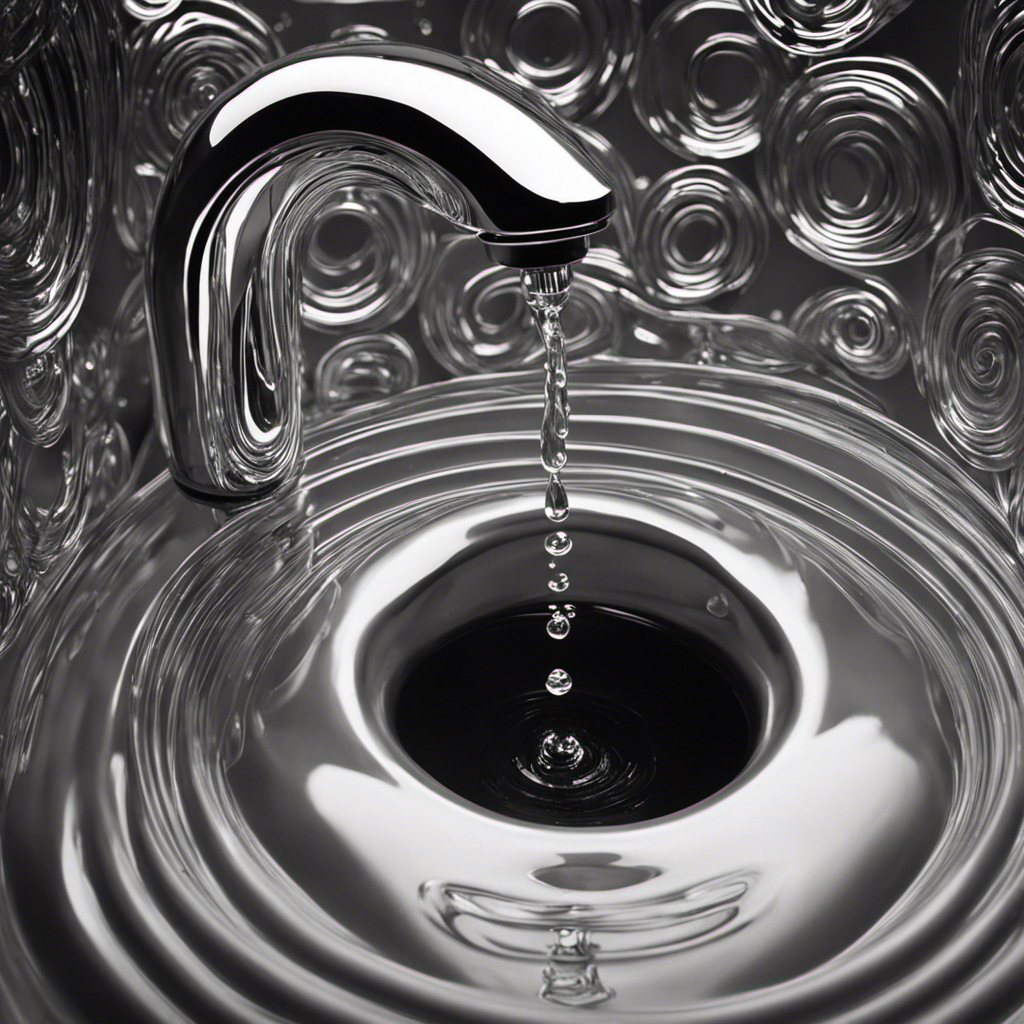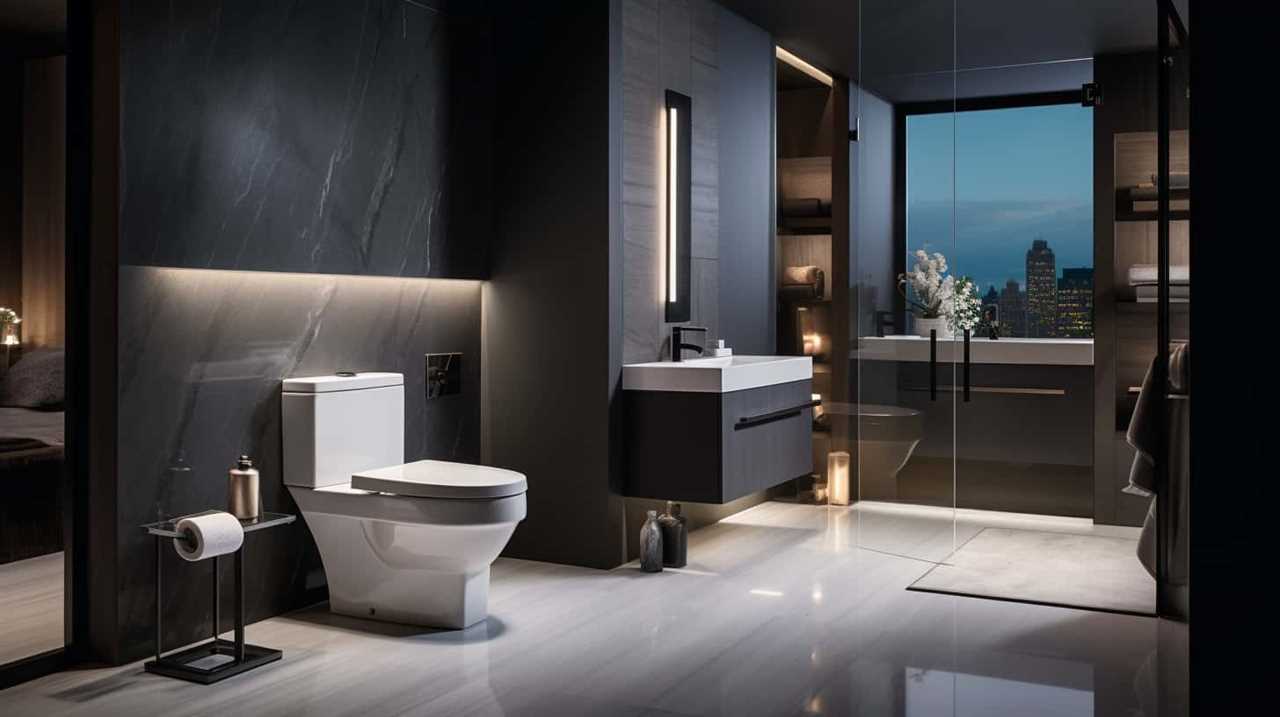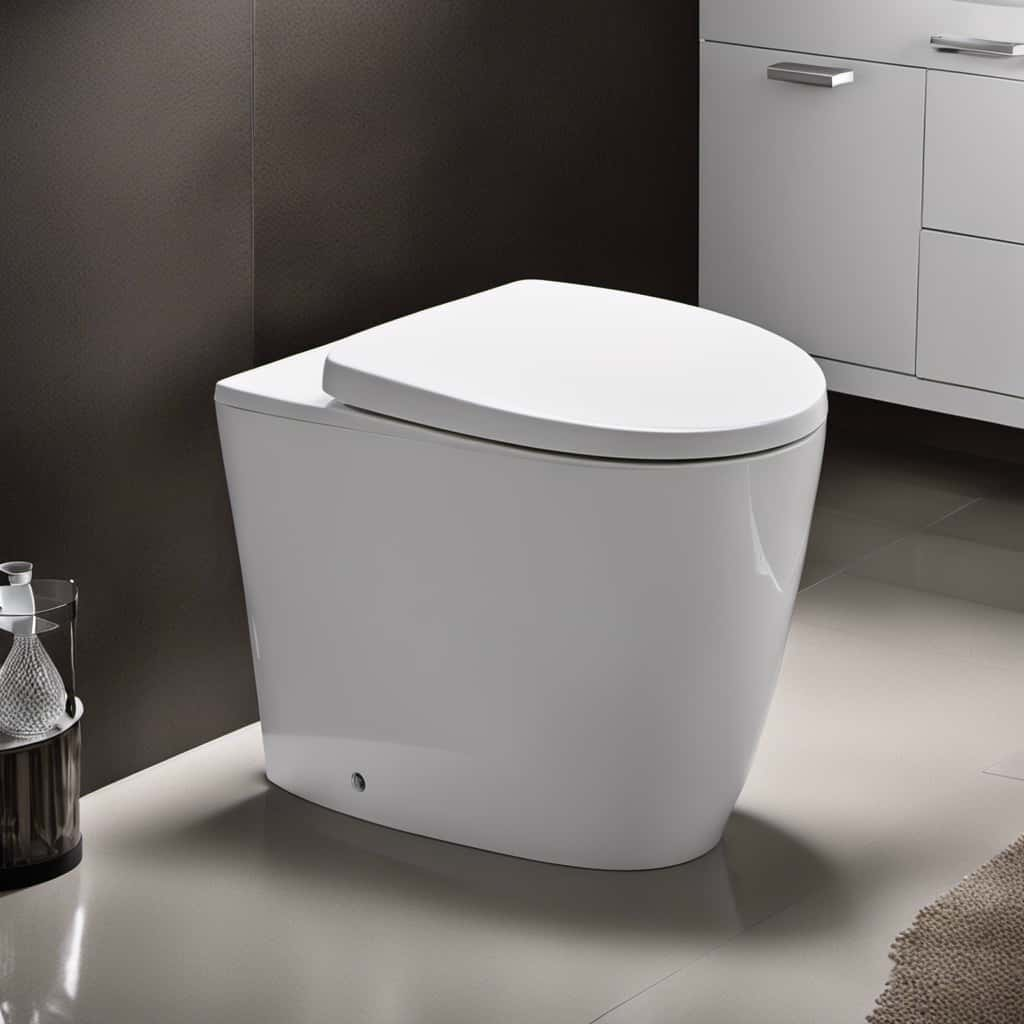Are you tired of hearing your toilet gurgle like a mischievous gremlin? Well, fear not, for we have the answers you seek!
In this article, we will take you on a journey through the hidden world of plumbing, revealing the common culprits behind this unsettling sound.
From blocked vent stacks to clogged drain pipes, faulty toilet components to water pressure fluctuations, we will delve into the technical and detailed causes that may be plaguing your porcelain throne.
So, grab your plunger and let’s dive into the depths of toilet gurgling!
Key Takeaways
- Clogged drain causing trapped air and gurgling sound
- Faulty flapper valve allowing air to be sucked into the toilet bowl
- Blocked vent stack disrupting air flow and causing gurgling noises
- Clogged drain pipes leading to slow drainage and odors
Common Plumbing Issues
If your toilet starts to gurgle, it could be due to common plumbing issues. Plumbing emergencies can be stressful, but with a little knowledge, you can tackle them yourself using DIY plumbing solutions.
One common issue that can cause your toilet to gurgle is a clogged drain. When your drain becomes blocked, it can cause air to get trapped in the pipes, leading to the gurgling sound.
Another possible culprit is a faulty flapper valve. If the flapper valve is not sealing properly, it can cause air to be sucked into the toilet bowl, resulting in the gurgling noise. These problems can often be fixed by using a plunger or a drain snake to clear the blockage, or by replacing the flapper valve.
Now, let’s delve into another potential cause of toilet gurgling: the blocked vent stack.
Blocked Vent Stack
Check if your vent stack is blocked, as this can lead to gurgling in your plumbing system.
The vent stack is an essential part of your plumbing system that allows air to enter and exit the pipes, preventing air pressure buildup. When the vent stack gets blocked, it disrupts the proper flow of air, causing gurgling noises in your plumbing fixtures.
A blocked vent stack can occur due to various reasons, such as debris buildup, animal nests, or even structural damage.
To identify if your vent stack is blocked, look for signs like slow draining, foul odors, or bubbling in the toilet bowl.
If you suspect a blocked vent stack, it is crucial to address it promptly to prevent further plumbing issues. Contact a professional plumber to inspect and perform the necessary repairs to restore proper ventilation in your plumbing system.
Clogged Drain Pipes
When drain pipes become clogged, it can lead to slow drainage and unpleasant odors in your plumbing system. A clogged sewer line is often caused by a buildup of debris, such as hair, grease, or foreign objects, that restricts the flow of wastewater. This blockage can result in water backing up into your sinks, toilets, or showers.
Additionally, improper pipe installation can contribute to clogged drain pipes. If pipes are not properly aligned or connected, they can become misaligned or develop leaks, allowing debris to accumulate and cause clogs.
To prevent clogged drain pipes, it is important to avoid flushing non-flushable items and to regularly clean your drains and pipes. Proper installation and maintenance can help keep your plumbing system running smoothly and prevent the need for costly repairs.
Speaking of maintenance, septic tank problems can also cause toilet gurgling and require prompt attention.
Septic Tank Problems
If you’re experiencing issues with your septic tank, there are three key points to consider: excessive waste build-up, leaks or cracks, and lack of maintenance.
Excessive waste build-up can cause blockages and backups in your septic system, leading to major problems.
Leaks or cracks in the tank can result in groundwater contamination and can also lead to the system not functioning properly.
Lastly, lack of maintenance, such as infrequent pumping or neglecting to properly care for the tank, can cause a range of issues that can be costly to repair.
Excessive Waste Build-Up
You may experience gurgling in your toilet due to too much waste buildup. When this happens, it can be a sign of potential problems that could lead to a toilet overflow or even a sewage backup. To help you understand the causes of this issue, here are some important points to consider:
- Clogged pipes: Accumulation of waste and debris can obstruct the flow of water, causing it to gurgle.
- Faulty venting system: If the venting system is blocked or damaged, it can create pressure imbalances, resulting in gurgling sounds.
- Malfunctioning septic tank: A full or failing septic tank can lead to waste backing up into your toilet, causing gurgling noises.
- Tree root intrusion: Tree roots can invade and damage your sewer lines, causing blockages and gurgling in your toilet.
- Improper installation: An incorrectly installed toilet or plumbing system can cause air pockets, leading to gurgling sounds.
Understanding the causes of gurgling in your toilet is crucial to prevent further issues. Now, let’s explore the next potential problem: leaks or cracks.
Leaks or Cracks
Leaking or cracked pipes can result in water damage and potential structural issues.
When it comes to toilet flushing, water leaks can be a common problem that can lead to gurgling sounds. These leaks can occur in various parts of the toilet, such as the tank, the fill valve, or the supply line.
A leak in the tank can cause water to continuously flow into the bowl, resulting in a gurgling sound as the water tries to escape. Similarly, a leak in the fill valve or supply line can disrupt the proper flow of water, causing the toilet to gurgle when flushed.
It is important to address these leaks promptly to prevent further damage and ensure the proper functioning of your toilet.
Lack of Maintenance
To prevent toilet gurgling, proper maintenance is essential. Neglecting your toilet can lead to various issues, including gurgling noises. Here are some toilet maintenance tips to keep in mind:
- Regularly clean the toilet bowl and tank to prevent clogs and buildup.
- Check the flapper valve for any signs of wear or damage and replace if necessary.
- Ensure the fill valve is functioning correctly and adjust the water level if needed.
- Inspect the flush valve and replace it if it is worn out or faulty.
- Avoid flushing items that are not meant to be flushed, such as wipes or sanitary products.
Faulty Toilet Components
If you’re experiencing issues with your toilet, there could be a few faulty components to blame.
One common problem is flapper seal deterioration, which can lead to water leakage and constant running.
Another possible culprit is a clogged drain pipe, which can cause slow or incomplete flushing.
Lastly, a faulty fill valve may prevent the tank from refilling properly, resulting in weak flushes or incomplete bowl refills.
Flapper Seal Deterioration
The flapper seal may deteriorate, causing the toilet to gurgle. When the flapper seal deteriorates, it fails to create a proper seal, allowing water to leak from the tank into the bowl. This can lead to a variety of issues, including a gurgling sound when the toilet is flushed.
To address this problem, consider the following troubleshooting steps:
- Check the flapper seal for any signs of wear or damage.
- Clean the flapper and the valve seat to remove any debris or mineral buildup.
- Adjust the chain length to ensure the flapper closes tightly.
- If the flapper is beyond repair, replace it with a new one.
- Consider upgrading to a flapper with a better seal for improved performance.
Clogged Drain Pipe
Check if there’s a clogged drain pipe by using a plunger to clear any blockages. Clogged drain pipes can cause various issues, including gurgling toilets.
To prevent clogs and optimize water flow, it’s important to take certain precautions. Avoid flushing items like wipes, cotton balls, or sanitary products down the toilet, as they can easily become lodged in the drain pipe.
Additionally, regular maintenance is crucial. Use drain cleaners or natural remedies like baking soda and vinegar to keep the pipes clear. Installing a hair catcher in the shower drain can also help prevent blockages.
Remember to avoid pouring grease down the drain, as it can solidify and cause clogs. By following these steps, you can ensure proper water flow and minimize the risk of clogged drain pipes.
Faulty Fill Valve
To fix a faulty fill valve, you’ll need to replace it with a new one. A faulty fill valve can cause various issues with your toilet, such as a gurgling sound or a water filling issue. Here are some important points to consider:
-
Identifying the problem: If you hear a gurgling sound coming from your toilet or notice that it takes longer than usual for the tank to fill up, it’s likely that your fill valve is faulty.
-
Turning off the water: Before replacing the fill valve, make sure to turn off the water supply to your toilet. This can usually be done by turning the valve located on the wall behind the toilet.
-
Removing the old fill valve: Disconnect the water supply line from the fill valve and unscrew the nut securing the fill valve to the bottom of the tank. Remove the old fill valve by lifting it out of the tank.
-
Installing the new fill valve: Follow the manufacturer’s instructions to install the new fill valve. Make sure it is securely attached to the tank and the water supply line is properly connected.
-
Testing the new fill valve: Turn the water supply back on and check for any leaks. Flush the toilet and listen for any gurgling sounds. If everything looks and sounds normal, you have successfully replaced the faulty fill valve.
Water Pressure Fluctuations
You may experience gurgling in your toilet due to water pressure fluctuations. When the water pressure in your plumbing system changes suddenly, it can cause a phenomenon known as water hammer. Water hammer occurs when the flow of water is abruptly stopped or redirected, creating a loud banging or gurgling noise.
This can happen when a toilet is flushed, causing a surge of water that disrupts the normal flow. Another possible cause of gurgling is sediment buildup in the pipes. Over time, minerals and debris can accumulate, narrowing the passageways and causing water to flow unevenly. This can result in gurgling sounds as the water tries to navigate through the restricted areas.
In the next section, we will discuss another possible cause of toilet gurgling: tree root infiltration.
Tree Root Infiltration
If not addressed, tree root infiltration can lead to significant damage in your plumbing system. Tree roots are naturally drawn to sources of water, and unfortunately, your plumbing system can provide the perfect environment for them to thrive. Here are some key points to consider about tree root infiltration:
- Tree roots can penetrate small cracks or joints in your pipes, causing blockages and leaks.
- As roots grow, they can put pressure on your pipes, leading to cracks and breaks.
- If left untreated, tree root infiltration can result in costly repairs and even the need to replace your entire plumbing system.
Tree root removal involves cutting or digging out the roots from your pipes. Prevention methods include regular maintenance, such as inspecting and clearing any nearby trees or plants that could cause root intrusion, and using root barriers or chemical treatments to deter root growth.
Taking proactive measures to address tree root infiltration can help you avoid plumbing issues and keep your system running smoothly.
Conclusion
So there you have it, now you know what causes your toilet to gurgle. It could be due to a blocked vent stack, clogged drain pipes, septic tank problems, faulty toilet components, or even water pressure fluctuations.
It’s important to address these issues promptly to avoid any further damage to your plumbing system. Remember, prevention is key! Keep an eye out for any signs of tree root infiltration, as this can cause serious problems down the line.
Don’t let your toilet become a gurgling monster – take action now!










